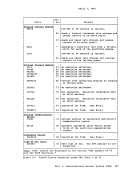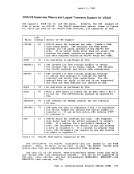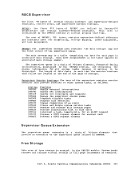Examine the old
instruction that was executing when the operator pressed
disabled wait state or loop.
attached processor configuration are the same as those that cause a
uniprocessor configuration to abnormally terminate.
status of the system at the time
stored in the
executing by looking at the
execute. The
Examine the
helpful in determining the events that preceded the abend. The
The values in the general registers can help you to locate the
current
Dumps" for detailed information on the contents of the general
that caused the abend is a pageable module. Refer to "Reading
Dumps" to find out how to identify that pageable module.
map that was created when the
address of the end of the resident nucleus.
-the terminal:
causing the abend. The
Because
its debug facilities to examine status.
cause of the abend without taking a dump.
The d.ebug program is located in the resident nucleus of
its own save and work areas. Because the debug program itself does not
alter the status of the system,
routines and data cannot be overlaid unless you specifically request it.
Likewise, you can use the
cannot inadvertently overlay storaqe because the
areas are completely separate.















































































































































































































































































































































































































































